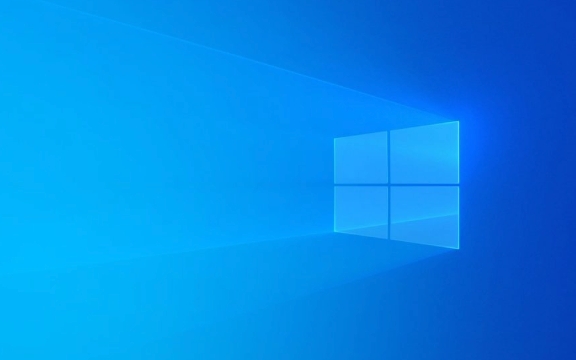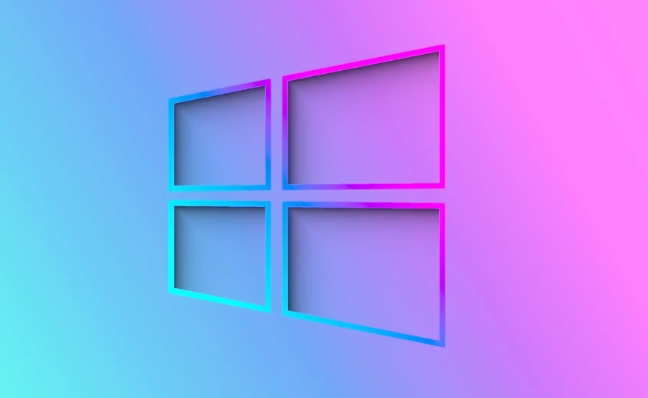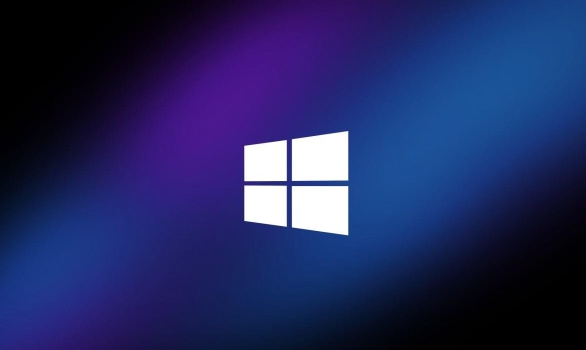Use Compatibility Mode by right-clicking the .exe, selecting Properties, going to the Compatibility tab, enabling "Run this program in compatibility mode for:" and choosing an older OS like Windows XP or Windows 7, while optionally checking "Run as administrator," "Reduced color mode" (16-bit), or "Disable full-screen optimizations," then clicking Apply and OK. 2. Run as Administrator by enabling the option in the same Compatibility tab to grant elevated privileges necessary for system access, but only for trusted software. 3. Install Required Dependencies such as Visual C Redistributables (2005–2010), .NET Framework 3.5 (enabled via Control Panel > Programs > Turn Windows features on or off), DirectX 9.0c, or Java Runtime Environment from official sources. 4. Use a Virtual Machine with VirtualBox or VMware Workstation Player and an old Windows ISO like Windows XP or 7 for programs that still won’t run, providing a safe, isolated environment. Bonus: Check online for compatibility patches, community updates, or modern alternatives to replace outdated or unsupported software. Start with compatibility settings and admin rights, install missing components, and use a VM if necessary—most legacy programs can be made to work with these steps.

Running an old program on Windows 10 can be tricky due to compatibility issues, but it’s usually possible with a few tweaks. Here’s how to get most legacy software working smoothly.

1. Use Compatibility Mode
Windows 10 includes a built-in feature that lets you run older programs as if they were on an earlier version of Windows.
Steps:

- Right-click the program’s executable (.exe) file.
- Select Properties.
- Go to the Compatibility tab.
- Check "Run this program in compatibility mode for:".
- Choose an older OS (e.g., Windows XP, Windows 7).
- Optionally, check:
- "Run as administrator" (some old apps need elevated privileges).
- "Reduced color mode" (set to 16-bit if the app has display issues).
- "Disable full-screen optimizations" (helps with fullscreen crashes).
- Click Apply, then OK and try running the program.
Pro tip: If you're not sure which OS to pick, start with Windows XP (Service Pack 3) or Windows 7 — they cover most older software.
2. Run as Administrator
Many older programs expect full system access, which modern Windows restricts by default.

- In the same Compatibility tab, check "Run this program as an administrator".
- This gives the app higher privileges, which may be needed for writing to certain folders (like Program Files) or accessing system settings.
Note: Only do this with trusted software from reliable sources to avoid security risks.
3. Install Required Dependencies
Old programs often rely on outdated frameworks or libraries that aren't included in Windows 10.
Common dependencies include:
- Visual C Redistributables (e.g., 2005, 2008, 2010)
- .NET Framework (versions 2.0, 3.5 — enable via Windows Features)
- DirectX 9.0c
- Java Runtime Environment (for older Java apps)
To enable .NET Framework 3.5 (commonly needed):
- Go to Control Panel > Programs > Turn Windows features on or off.
- Check .NET Framework 3.5 (includes .NET 2.0 and 3.0).
- Click OK — Windows will download it if needed.
You can find the other packages on Microsoft’s official download pages or trusted software archives.
4. Use a Virtual Machine (For Stubborn Programs)
If nothing else works, run an older version of Windows inside a virtual machine.
Options:
- VirtualBox (free) an old Windows ISO (e.g., Windows XP, 7).
- VMware Workstation Player (free for personal use).
- Microsoft’s Windows Virtual PC (only for XP Mode, limited use).
This gives you a safe, isolated environment where legacy software runs natively.
This is ideal for very old business software, DOS applications, or programs that use outdated drivers.
Bonus: Check for Patches or Modern Alternatives
Sometimes the developer released a compatibility patch or a newer version.
- Search online for “[Program Name] Windows 10 fix”.
- Look for community patches or fan-made updates (common with old games).
- Consider switching to a modern alternative if the software is outdated or unsupported.
Basically, start with compatibility mode and admin rights, install missing dependencies, and fall back to a VM if needed. Most old programs can run — it just takes a little tweaking.
The above is the detailed content of How to run an old program on Windows 10. For more information, please follow other related articles on the PHP Chinese website!

Hot AI Tools

Undress AI Tool
Undress images for free

Undresser.AI Undress
AI-powered app for creating realistic nude photos

AI Clothes Remover
Online AI tool for removing clothes from photos.

Clothoff.io
AI clothes remover

Video Face Swap
Swap faces in any video effortlessly with our completely free AI face swap tool!

Hot Article

Hot Tools

Notepad++7.3.1
Easy-to-use and free code editor

SublimeText3 Chinese version
Chinese version, very easy to use

Zend Studio 13.0.1
Powerful PHP integrated development environment

Dreamweaver CS6
Visual web development tools

SublimeText3 Mac version
God-level code editing software (SublimeText3)

Hot Topics
 Windows 11 slow boot time fix
Jul 04, 2025 am 02:04 AM
Windows 11 slow boot time fix
Jul 04, 2025 am 02:04 AM
The problem of slow booting can be solved by the following methods: 1. Check and disable unnecessary booting programs; 2. Turn off the quick boot function; 3. Update the driver and check disk health; 4. Adjust the number of processor cores (only for advanced users). For Windows 11 systems, first, the default self-start software such as QQ and WeChat are disabled through the task manager to improve the startup speed; if you use dual systems or old hardware, you can enter the power option to turn off the quick boot function; second, use the device manager to update the driver and run the chkdsk command to fix disk errors, and it is recommended to replace the mechanical hard disk with SSD; for multi-core CPU users, the kernel parameters can be adjusted through bcdedit and msconfig to optimize the startup efficiency. Most cases can be corrected by basic investigation
 How to Change Font Color on Desktop Icons (Windows 11)
Jul 07, 2025 pm 12:07 PM
How to Change Font Color on Desktop Icons (Windows 11)
Jul 07, 2025 pm 12:07 PM
If you're having trouble reading your desktop icons' text or simply want to personalize your desktop look, you may be looking for a way to change the font color on desktop icons in Windows 11. Unfortunately, Windows 11 doesn't offer an easy built-in
 Fixed Windows 11 Google Chrome not opening
Jul 08, 2025 pm 02:36 PM
Fixed Windows 11 Google Chrome not opening
Jul 08, 2025 pm 02:36 PM
Fixed Windows 11 Google Chrome not opening Google Chrome is the most popular browser right now, but even it sometimes requires help to open on Windows. Then follow the on-screen instructions to complete the process. After completing the above steps, launch Google Chrome again to see if it works properly now. 5. Delete Chrome User Profile If you are still having problems, it may be time to delete Chrome User Profile. This will delete all your personal information, so be sure to back up all relevant data. Typically, you delete the Chrome user profile through the browser itself. But given that you can't open it, here's another way: Turn on Windo
 How to fix second monitor not detected in Windows?
Jul 12, 2025 am 02:27 AM
How to fix second monitor not detected in Windows?
Jul 12, 2025 am 02:27 AM
When Windows cannot detect a second monitor, first check whether the physical connection is normal, including power supply, cable plug-in and interface compatibility, and try to replace the cable or adapter; secondly, update or reinstall the graphics card driver through the Device Manager, and roll back the driver version if necessary; then manually click "Detection" in the display settings to identify the monitor to confirm whether it is correctly identified by the system; finally check whether the monitor input source is switched to the corresponding interface, and confirm whether the graphics card output port connected to the cable is correct. Following the above steps to check in turn, most dual-screen recognition problems can usually be solved.
 Want to Build an Everyday Work Desktop? Get a Mini PC Instead
Jul 08, 2025 am 06:03 AM
Want to Build an Everyday Work Desktop? Get a Mini PC Instead
Jul 08, 2025 am 06:03 AM
Mini PCs have undergone
 Fixed the failure to upload files in Windows Google Chrome
Jul 08, 2025 pm 02:33 PM
Fixed the failure to upload files in Windows Google Chrome
Jul 08, 2025 pm 02:33 PM
Have problems uploading files in Google Chrome? This may be annoying, right? Whether you are attaching documents to emails, sharing images on social media, or submitting important files for work or school, a smooth file upload process is crucial. So, it can be frustrating if your file uploads continue to fail in Chrome on Windows PC. If you're not ready to give up your favorite browser, here are some tips for fixes that can't upload files on Windows Google Chrome 1. Start with Universal Repair Before we learn about any advanced troubleshooting tips, it's best to try some of the basic solutions mentioned below. Troubleshooting Internet connection issues: Internet connection
 How to clear the print queue in Windows?
Jul 11, 2025 am 02:19 AM
How to clear the print queue in Windows?
Jul 11, 2025 am 02:19 AM
When encountering the problem of printing task stuck, clearing the print queue and restarting the PrintSpooler service is an effective solution. First, open the "Device and Printer" interface to find the corresponding printer, right-click the task and select "Cancel" to clear a single task, or click "Cancel all documents" to clear the queue at one time; if the queue is inaccessible, press Win R to enter services.msc to open the service list, find "PrintSpooler" and stop it before starting the service. If necessary, you can manually delete the residual files under the C:\Windows\System32\spool\PRINTERS path to completely solve the problem.







